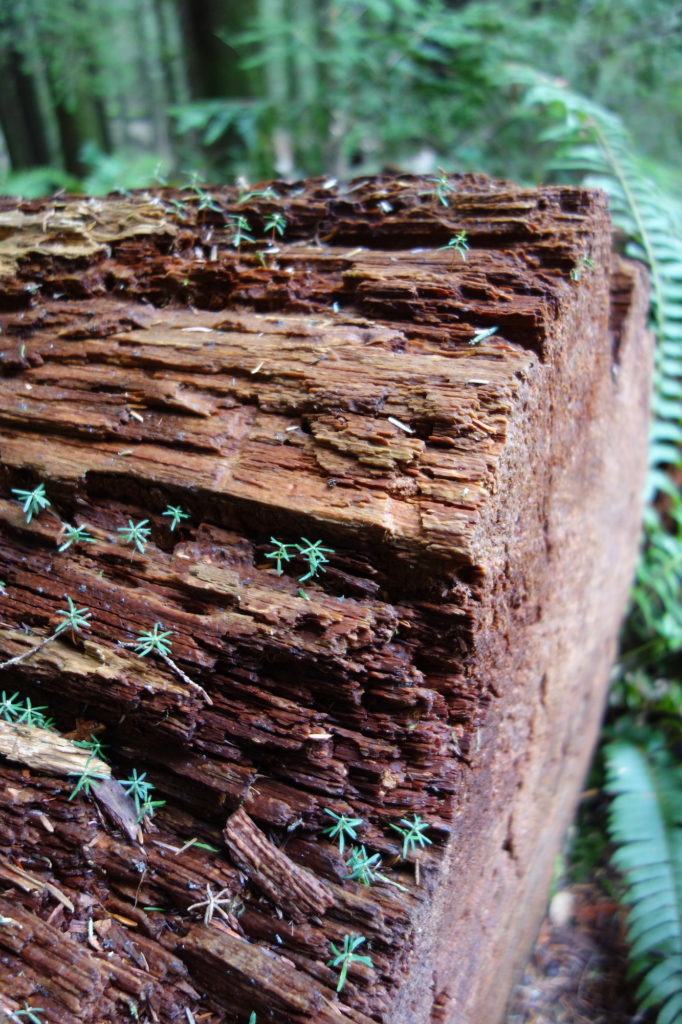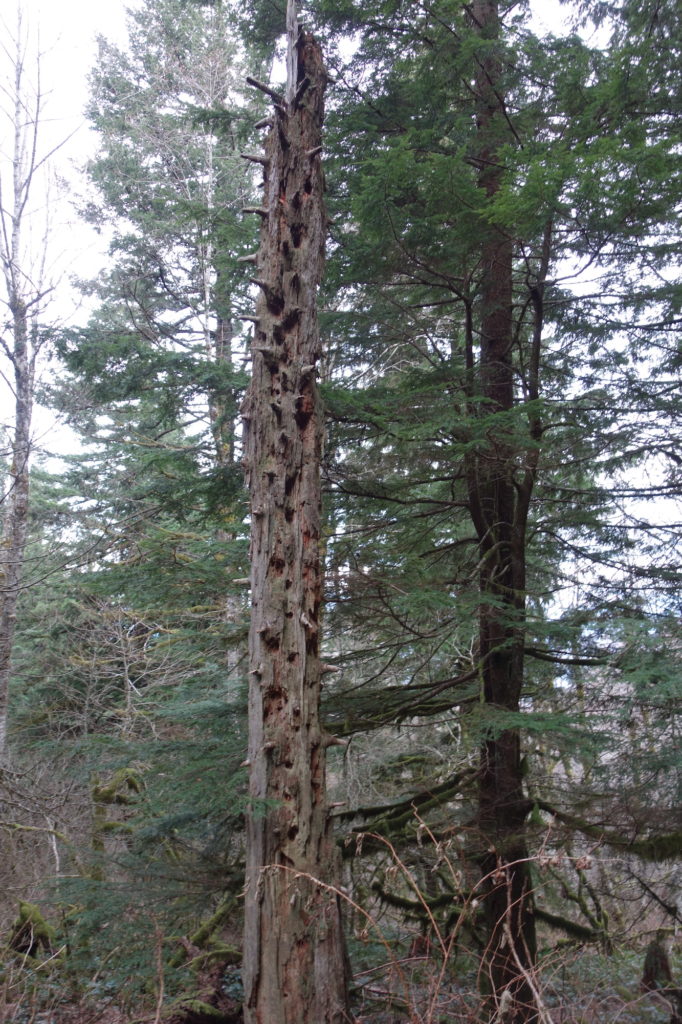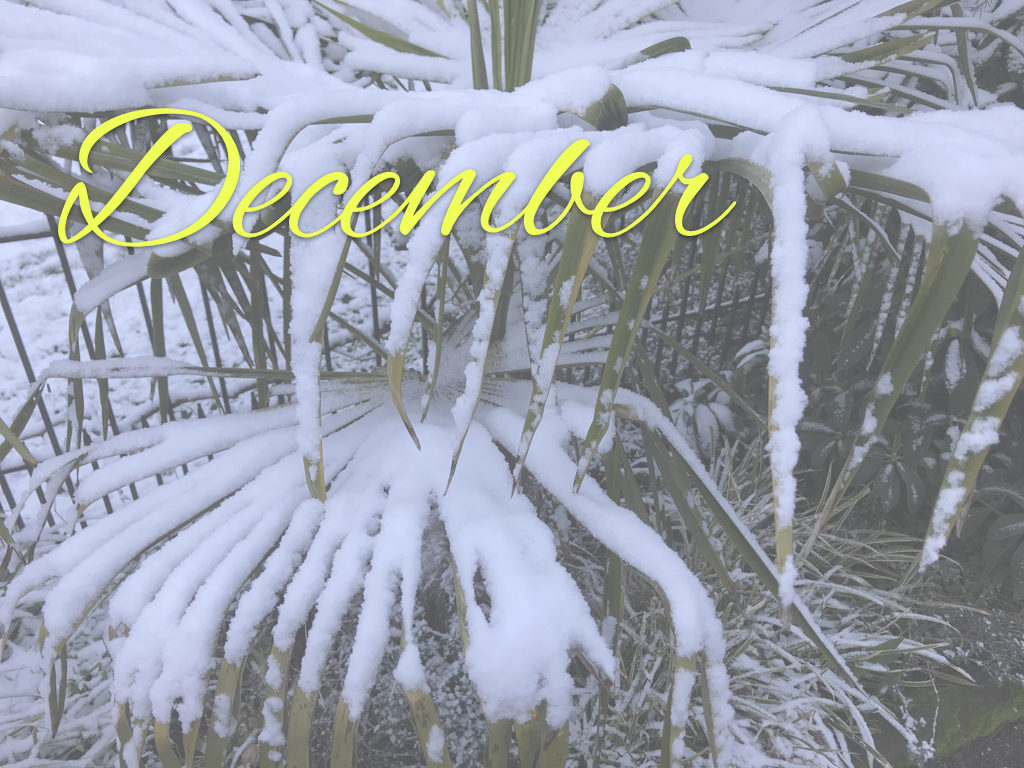The hinoki cypress (Chamaecyparis obtusa), a native of Japan, is a popular garden tree in the Pacific Northwest. I aesthetically prune dozens of them each year for many clients. There are many ways to prune them improperly (e.g. shearing, pom-pom style, and hacking), but the best way to do it correctly is to work with nature by pruning them in a way that facilitates their natural growing habits, and in a way that accentuates their natural structure and beauty. The Japanese pruning techniques of bonsai and niwaki are what inform and inspire my style of pruning. This tree took me about an hour and a half to prune out. Had this been done by a Japanese pruning master, they might have spent a day or two on it. Unfortunately, it’s not in most people’s budgets to pay an arborist-pruner that amount of money; therefore, we have to do it quickly and affordably. We hope this video inspires you!
Monthly Archives: December 2019
Video: De-Squarifying a Sheared Camellia
In our profession as aesthetic pruner-arborists, too often we encounter shrubs and shrub-trees that have been improperly pruned. Often they’re pruned (sheared) into geometric shapes like cubes, spheres, rectangles, pyramids, cones or even lollipops. I call this cubistic pruning—like cubistic art, if you can even call it art. Often a client will move into a home where the plants have been pruned in this manner by the previous owners, and the new owners want to restore the plant to its natural shape; they want to de-sqaurify, de-spherify, de-conify it, if you will. This often can be done, but a tree can’t be transformed from a geometric shape to its natural form overnight. It may take a few years of corrective or restorative pruning to accomplish this. In this video, we will demonstrate the first step taken to de-squarify a camellia that has been pruned and sheared for years into a cube shape. Please enjoy.
Good News Tree Service, Inc.—Who We Are and What We Do
Before you hire Good News Tree Service, Inc. of Wilsonville, Oregon, we invite you to learn a little about us by watching this short video. We look forward to serving you. Thank you and cheers! — Nathan Lawrence and the team
Maybe you should leave that dead tree in your yard…here’s why

Life is a complicated and connected chain comprised of countless threads that are all tightly interwoven. Each one is co-dependent for its survival on the other. A dead tree figures prominently into this intricate web of life. How so, you may ask? Let’s explore this idea together.
As a tree care provider for nearly 50 years, for most of that time, on encountering a dead tree, the automatic, even thoughtless, reaction has been to remove it. However, now we realize that there are times when leaving a dead tree is the right thing to do in order to help preserve the delicate balance of nature and protect the chain of life that depends of that dead tree.
Without a doubt, if leaving a dead tree standing will imperil life and property, it must be removed; this is because it’s a liability and a hazard. However, what if that tree is in a place where it won’t be dangerous to life and property, when it starts to decay and fall apart? Or what if we can reduce the tree in size so that it is no longer a hazard, thus allowing it “live” after it has died?
It’s a fact of nature that dead trees play an important role in the balance of nature. As they are decaying, they provide food, protection and habitation for many things such as the soil, insects, birds, amphibians, mammals, plants and fungi. Next time you’re walking in a forest and you spot a dead tree snag, a rotten log or an old tree stump, don’t take it for granted and pass it by. Rather, stop and look at the microcosm of life that surrounds that piece of rotting wood debris. Notice how many life forms depend on it. In fact, there are some that will spend their entire life in, on and around that piece of rotting wood. They need it, and without it, they will cease to exist.
Consider how a selfless tree keeps on giving life long after the last living cell has died within it. And even then, when it has decomposed and melted into the earth, the topsoil that derives from that tree will continue to give life for hundreds or thousands of years. It takes about a hundred years of plant debris to make an inch of topsoil. Just try to imagine how many trees went into making that one inch. It’s an amazing wonder of nature!
The great thing is that you can be part of helping to preserve the earth by leaving stumps or snags in your garden and even working them into your landscaping. It may take some creativity, but it can be done if you stretch your gardening mind and creatively think outside the traditional box. The forest are full of stumps, dead trees and rotten logs, and we think it’s beautiful. How about importing this idea into your own garden?
Here are some photos I have taken that illustrate the points made above. Please enjoy. The captions will explain what’s going on.


Tour of Collier Logging Museum, Chiloquin, Oregon
Collier Logging Museum is Oregon’s and perhaps the nation’s foremost historic logging museum, and is located in southern central Oregon just north of Klamath Falls on Highway 97 near the town of Chiloquin at the Collier Memorial State Park.
This free museum tells the history of logging in Oregon including cutting, moving and milling from the 1860s to the present.
The museum, which was started in 1947, occupies 147 acres, and can be toured in about an hour.
The timber industry was the main driving force in Oregon’s economy for 130 years until about 1990 as Oregon produced more wood products than any other U.S. state.
Enjoy this quick tour of this fun museum, and check it out next time you’re in that area. For more info check out these links:
https://oregonencyclopedia.org/articles/collier_logging_museum_and_state_park/#.Xe2hrS2ZN24
https://oregonstateparks.org/index.cfm?do=parkPage.dsp_parkPage&parkId=165
December in the Garden—A To Do List

This guide is tailored for the western valleys of Oregon and Washington.
YOU can help to make the world a better, a more friendly, loving and beautiful place by being a good steward of the spot on this earth that you are privileged to be borrowing for a time—your garden. Nathan, the Treevangelist, urges you to treat your spot on this planet like your own personal Garden of Eden paradise. Then notice the joy that it will bring to you! This is your divinely mandated responsibility. Your trees, shrubs, flowers and the wildlife in your yard will express their smiling appreciation back to you and to others as they radiate love, joy and beauty bursting forth with vibrant and verdant life. Below is a to do list to help you to do just that.
Winter is finally here. The leaves are down and picked up. The garden is at rest—a state of stasis, more or less. Time to kick back and give yourself a break from gardening for a little while until life begins to pop again in three months, unless, of course, you’re a diehard, incurable and inveterate gardener like me. In that case, you’re always messing around in your garden no matter the season or weather conditions! Gortex and wool are your best friends at this time of the year, aren’t they? For you hardy souls, here’s a checklist of things with which to keep yourself busy in your little oasis on planet earth during December-r-r-r.
Readers’ suggestions on how to improve this list are gladly solicited. If you, the reader, have any suggestions for additions to this month’s list, please put them in the comments section of this article, and I will add them to the list. Thank you in advance! — Nathan
Tree and Shrub Care
- Fruit tree sanitation. To prevent possible spread of leaf diseases, rake up and remove leaves from around the base of fruit trees.
- Fruit tree pruning: After the leaves drop is an excellent time to prune trees that are done fruiting and for aesthetics, since wounds will heal more quickly in warmer weather than occurs in winter. This is also a good time to reduce the height of overgrown fruit trees, since they are likely to produce fewer water sprouts now then when pruned in the spring.
- Storm proof your larger trees: With the advent of winter storms and the potential damage that they may inflict upon your trees, have an ISA Certified Arborist with an ISA Tree Risk Assessment Qualification (like Good News Tree Service, Inc.) inspect your large trees for the potential of failure due to weak root systems and defects in trunks and branches. This can be done anytime of the year, but now, before the winter storms hit, is an excellent time to proactive assess the condition of your trees for potential limb and trunk breakage.
- Large trees: After each major weather event, check your trees for damage such as broken or hanging limbs. If you have concerns or questions about your trees, have an ISA Certified Arborist with an ISA Tree Risk Assessment Qualification (like Good News Tree Service, Inc.) inspect your large trees for damage or the potential of failure due to weak root systems and defects in trunks and branches.
- Plant or transplant trees and shrubs. After the cold, seasonal rains have started is a good time to plant or transplant ornamental trees and shrubs. Cooler weather means less transplant shock to the plants, and over the winter and spring, they will have time to begin to acclimate to their new environment before the stress of the next summer season occurs.
- Prune your trees and shrubs. This is a good time to start pruning your deciduous trees and shrubs after the leaves have fallen and a tree’s branching structure is clearly visible making pruning easier. If you’re not sure what to do, or how to do it, call Good News Tree Service, Inc. for a consultation, pruning lessons or to have them to the pruning for you.
- Prune coast/shore pines (Pinus contorta) and Scotch/Scots pines (Pinus sylvestris). These two pines are especially susceptible to the sequoia pitch moth whose larvae burrow into the tree trunks during the growing season (April through September) causing the trees to exude large amounts of unsightly pitch globules. While this seldom kills the tree, the bleeding of sap is not good for the overall health and vigor of the tree. It is advisable, therefore, not to prune these pine trees during the growing season, since the pruning cuts attract the moth, which then lays eggs on the tree, which hatch into tree-burrowing larvae. Pruning should be done on your pines from November to March.
- Mulch trees and shrubs: Apply two to three inches of mulch around all trees and ornamental shrubs. This helps to fertilize the plants and feed the soil, and also protects them against weed growth and loss of water when the warmer weather returns, and helps to insulate the roots against cold weather in the winter.
Elsewhere in the Garden
- Put slug bait around winter flowers.
- Plant spring flowering bulbs.
- Rake and dispose of ornamental tree leaves, or better yet, compost them and then spread the decomposed leaves back onto your shrub beds as a mulch next year.
- Mulch your shrub beds. Put a two to three inches of mulch (e.g. bark dust, garden compost or wood chips) around perennials and other plants that might be sensitive to subfreezing weather. Also, spread a fresh layer of mulch (e.g. bark dust, garden compost or wood chips) on all the bare dirt areas in your yard to prevent soil compaction from rains, to prevent weed growth and to enrich and help to condition your heavy clay soils. Adding a layer of mulch (several inches thick) over any tender perennial flowers, especially if the weather turns extremely cold and the ground freezes, will prevent death of flowers like dahlias.
- Winterize your irrigation system. Provide winter protection to in-ground irrigation systems by draining them and insulating valve mechanisms.
- Winterize your outdoor faucets. Protect outside faucets from subfreezing temperatures, and drain and store garden hoses in your garage or garden shed.
- Cut English ivy off of the base of trees. (This can be done any time of the year.)
- Feed the birds. Dutifully maintain your bird feeders. As winter comes, birds have a harder time finding food. Bring life and excitement to your backyard by turning it into a bird sanctuary. The birds will thank you for your generosity by providing you with hours of entertainment, and by eating insect pests that harm your ornamental trees and shrubs.
